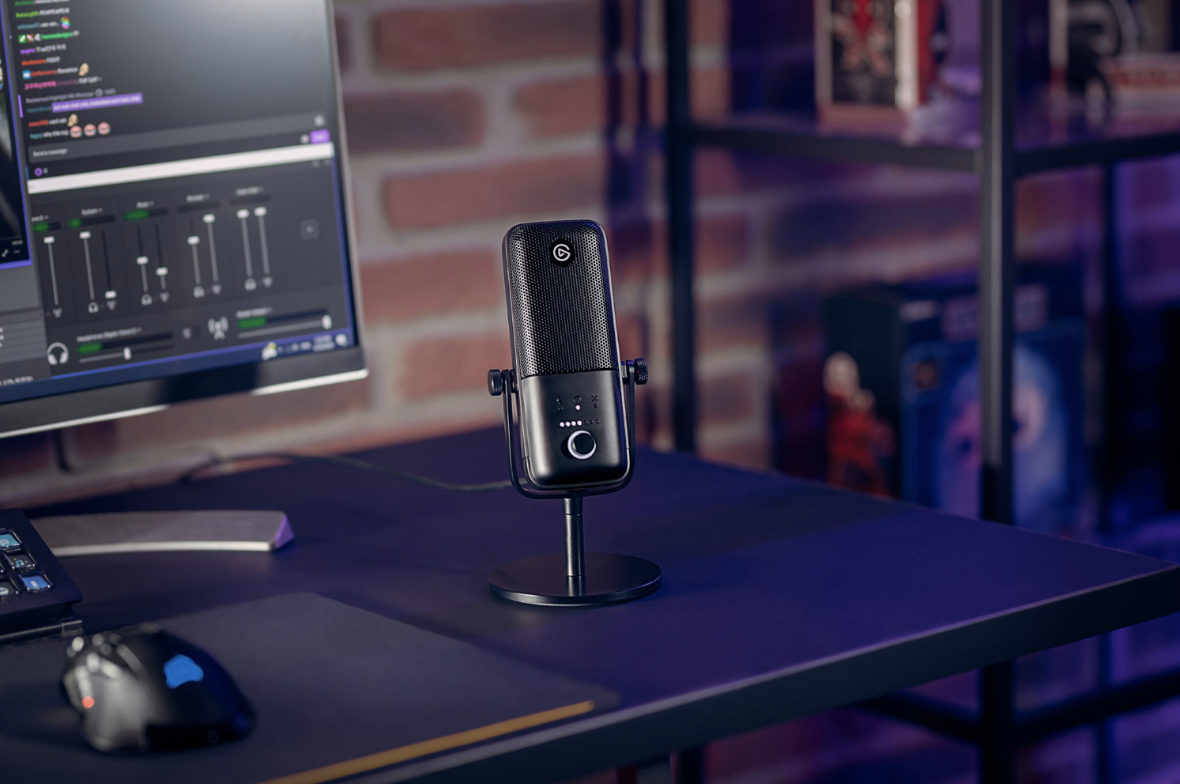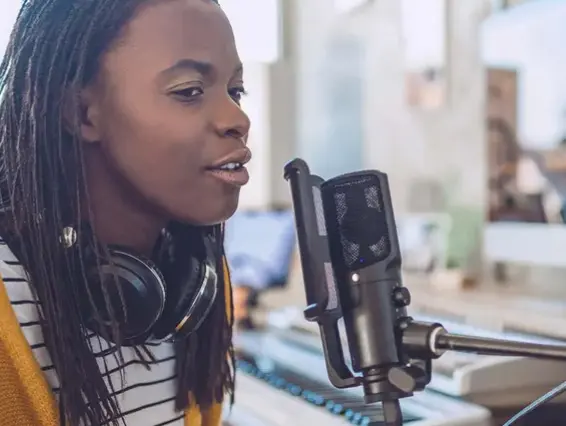
Podcast microphones are an essential tool for delivering clear and professional sound. One of the first decisions a podcaster faces is choosing the right microphone. Understanding different aspects of microphones can make this process more accessible and result in a more successful podcasting experience. Get answers to frequently asked questions about these tools in this article, and learn useful tips for speaking into a microphone to achieve the best audio quality.
Frequently asked questions about podcast microphones
Getting the right microphone for you
What type of microphone is best for podcasting?
When starting a podcast, selecting the right type of microphone is crucial. There are two primary categories: dynamic microphones and condenser microphones. Dynamic microphones are known for their ruggedness and ability to reject background noise. Condenser microphones offer a broader frequency response but may pick up more ambient noise. The choice often depends on the environment, your preferences, and budget.
USB vs. XLR: Which connection should I choose?
Microphones with USB connections are typically easier to set up and ideal for those who prefer a plug-and-play approach. XLR connections offer more professional-level control but may require additional equipment like an audio interface. Both have their unique applications and can serve podcasters well, depending on their specific needs and technical expertise.
Can I use a regular microphone for podcasting?
While any microphone can technically be used for podcasting, microphones designed specifically for this purpose tend to provide better sound quality and may have other podcast-friendly features. Regular microphones may not have the desired directional characteristics or frequency response for podcasting. The investment in a specialized microphone can lead to a more professional podcasting experience.
How much should I spend on a podcast microphone?
The price range for podcast microphones varies widely. Affordable options under $100 are available, but higher-end models can exceed $500. Factors such as sound quality, build, additional features, and your budget will guide the decision-making process. Investing in a quality microphone can pay dividends in sound quality and listener experience.

How to set up your microphone for podcasting
How do I properly set up my podcast microphone?
Setting up a podcast microphone requires attention to detail. Proper positioning, gain control, and using the right accessories are vital. Position the microphone at a proper angle to your mouth, set the gain to avoid distortion, and consider accessories like a pop filter or boom arm. A well-configured setup can enhance your voice’s clarity and presence.

Do I need a pop filter for my podcast microphone?
A pop filter helps reduce plosive sounds like ‘p’ and ‘b,’ improving sound quality. While not always necessary, it is generally recommended for a more professional sound. It’s a relatively inexpensive addition that can make a big difference in the final audio. Some microphones come with a built-in pop filter, while others may require an external one.
Is a boom arm necessary for podcasting?
A boom arm is not required but can make a significant difference in sound quality and comfort. By using a boom arm, you can reduce handling noise, easily adjust the microphone’s position, and maintain a consistent distance from the mic. Though not essential, a boom arm can be a valuable addition to a podcaster’s toolkit.
How to set up multiple microphones for podcasting
Setting up multiple microphones for a podcast can be a more complex process. You need to consider the microphones’ positioning to avoid phase issues, select the right mixer or interface with enough inputs, and manage the cabling. Ensuring each microphone is at the correct gain level and testing the setup before recording is essential to avoid any last-minute surprises. A well-planned multi-microphone setup can create a more immersive listening experience and cater to multiple hosts or guests.

Tips for speaking into a microphone for the best quality podcast
Speaking into a microphone for a podcast isn’t as simple as just talking. There are techniques and considerations that can greatly impact the sound quality. Here are some essential tips:
- Maintain a consistent distance: Keep a consistent distance from the microphone, typically 4 to 6 inches away. This helps in maintaining a uniform sound level and avoids abrupt changes in volume.
- Use a pop filter: As mentioned earlier, a pop filter can prevent plosive sounds like ‘p’ and ‘b’ from causing distortion. This is a simple addition that can improve your audio quality significantly.
- Mind your P’s and B’s: Even with a pop filter, be mindful of how you pronounce plosive sounds. A softer pronunciation can further reduce unwanted noise.
- Avoid sudden movements: Quick or sudden movements can cause handling noise or unwanted shifts in sound. Try to stay composed and make smooth movements if you need to adjust your position.
- Speak naturally and clearly: Enunciate clearly but also strive to maintain a natural and conversational tone. Too much force or exaggeration can make the recording sound unnatural.
- Warm up your voice: Just like a singer, warming up your voice can make a difference. Simple vocal exercises can prepare your voice for recording and help you sound your best.
- Consider the microphone’s polar pattern: Understanding the directional characteristics of your microphone (e.g., cardioid, omnidirectional) can help you position yourself for optimal sound pickup.
- Avoid unwanted noises: Be mindful of environmental noises such as computer fans, air conditioners, or other electronic devices. Turn off or move away from these sources to minimize interference.
- Hydrate: Keeping your vocal cords hydrated will help you maintain a clear voice. Have a glass of water nearby, but avoid ice-cold water as it can tighten the vocal cords.
- Practice makes perfect: If possible, do a trial run and listen to the playback to see how you sound. Make adjustments as needed to ensure that you’re capturing the best possible audio.
Implementing these tips can make a considerable difference in your podcast’s sound quality. The combination of the right equipment and the right technique can lead to a professional and engaging podcasting experience.

Start your podcasting journey with the right microphone
Podcast microphones are integral to a successful podcasting experience. Understanding various aspects like types, price, connections, and accessories will guide podcasters in making more informed decisions. Whether just starting out or an experienced podcaster, these insights will hopefully help you in your podcasting journey.
This article was drafted using AI technology and then reviewed, fact-checked, and revised by a member of our editorial team.




